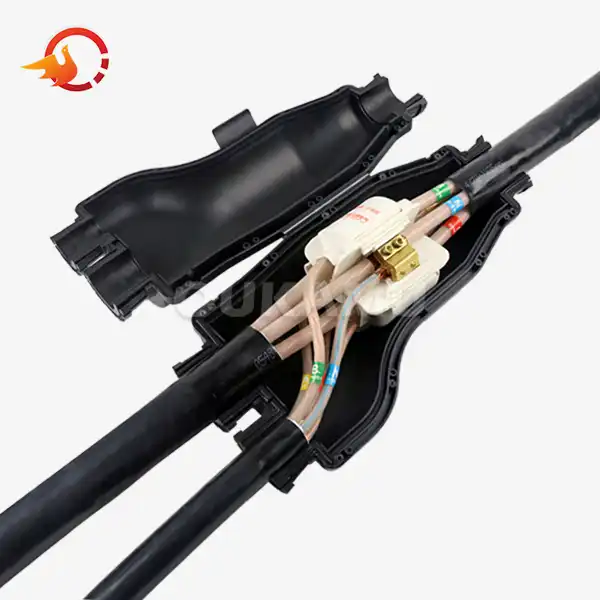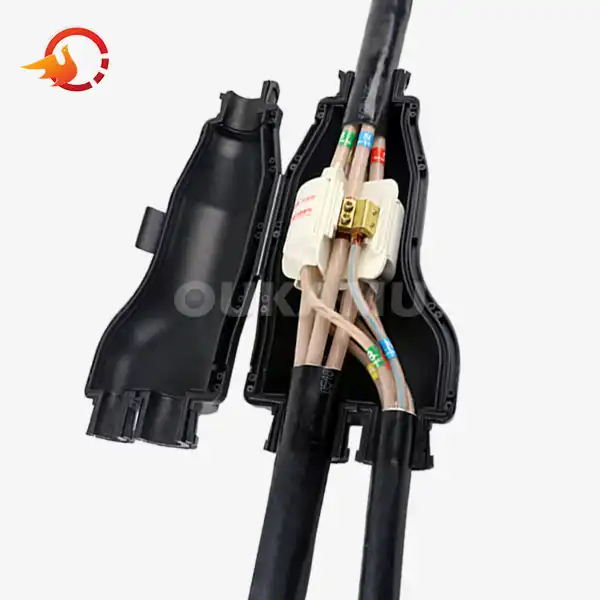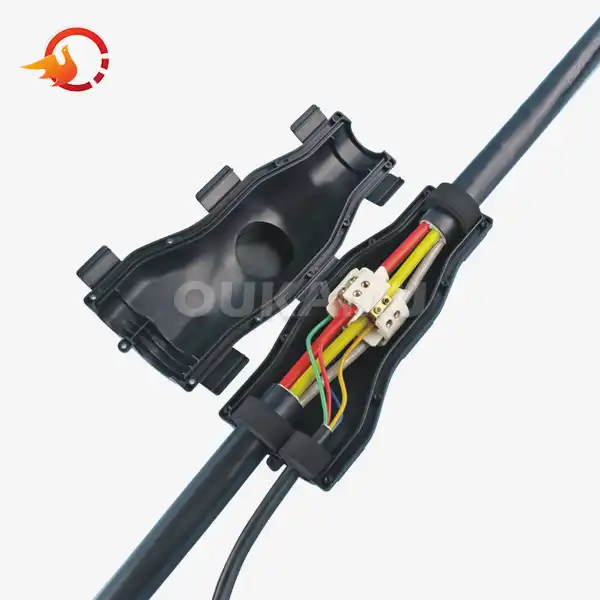What Are the Best Practices for LV Armoured Cable Jointing?
 2025-07-30 07:55:47
View:389
2025-07-30 07:55:47
View:389Low voltage (LV) armoured cable jointing is a critical aspect of electrical installations, demanding precision, expertise, and adherence to safety standards. Whether you're a seasoned electrician or a project manager overseeing electrical work, understanding the best practices for LV armoured cable jointing is essential. This comprehensive guide will delve into the intricacies of cable jointing, providing valuable insights to ensure your installations are safe, efficient, and long-lasting.
Understanding LV Armoured Cable Jointing
LV armoured cables are the backbone of many electrical distribution systems, providing power to various industrial, commercial, and residential applications. These cables are designed with an armour layer, typically made of steel wire or tape, which offers mechanical protection and additional strength. When it comes to joining these cables, precision and attention to detail are paramount.
The Importance of Proper Jointing
Proper jointing is crucial for maintaining the integrity of the electrical system. A well-executed joint ensures continuity of power supply, minimizes power losses, and prevents potential hazards such as short circuits or electrical fires. Moreover, it extends the lifespan of the cable installation, reducing the need for frequent maintenance or replacements.
Types of LV Armoured Cable Joints
There are several types of joints used in LV armoured cable installations, each suited for specific applications:
- Straight Through Joints: Used to connect two cable ends in a straight line.
- Branch Joints: Allow for the creation of a branch or tap from the main cable run.
- Transition Joints: Connect cables of different types or sizes.
- Termination Joints: Used at the end of a cable run to connect to equipment or switchgear.
Essential Best Practices for LV Armoured Cable Jointing
To ensure the highest standards of safety and performance, adhere to these best practices when jointing LV armoured cables:
Proper Cable Preparation
Before beginning the jointing process, meticulous cable preparation is essential:
- Clean and inspect the cable ends thoroughly, removing any dirt, moisture, or contaminants.
- Measure and mark the cable accurately for stripping, ensuring consistent dimensions across all joints.
- Use appropriate tools to strip the cable, taking care not to damage the underlying conductors or insulation.
- Score the outer sheath carefully to avoid nicking the armour or internal components.
Selecting the Right Jointing Kit
Choosing the appropriate jointing kit is crucial for a successful installation:
- Ensure the kit is compatible with the cable type, size, and voltage rating.
- Verify that all components are present and in good condition before starting the jointing process.
- Check the expiration dates on any resin or compound materials included in the kit.
- Opt for kits from reputable manufacturers that meet or exceed industry standards.
Maintaining Cleanliness and Dryness
A clean and dry work environment is crucial for effective cable jointing:
- Set up a clean, dry workspace, using tents or shelters if working outdoors.
- Keep all tools, materials, and cable ends free from moisture and contaminants.
- Use alcohol wipes to clean cable surfaces before applying any jointing materials.
- Avoid working in wet or humid conditions that could compromise the joint's integrity.
Proper Conductor Jointing Techniques
The method used to low voltage cable joints can significantly impact the joint's performance:
- Use appropriately sized crimp connectors or mechanical connectors for secure connections.
- Ensure proper crimping pressure is applied using calibrated tools.
- For soldered joints, use the correct grade of solder and flux, and maintain proper temperature control.
- Inspect each connection visually and mechanically to verify its integrity.
Effective Insulation and Sealing
Proper insulation and sealing are critical for protecting the joint from environmental factors:
- Apply insulation materials in layers, ensuring complete coverage and avoiding air pockets.
- Use heat-shrink tubing or cold-shrink technology for a tight, waterproof seal.
- Ensure proper overlap of insulation materials with the cable's existing insulation.
- For resin-based joints, mix components accurately and pour carefully to avoid air entrapment.
Armour Continuity and Earthing
Maintaining armour continuity is essential for safety and electromagnetic shielding:
- Use appropriate methods to bond the armour across the joint, such as tinned copper braid or purpose-designed kits.
- Ensure a low-resistance connection between armour sections.
- Properly earth the armour according to local regulations and system requirements.
- Verify armour continuity with appropriate testing equipment after jointing.
Advanced Considerations for LV Armoured Cable Jointing
Beyond the fundamental best practices, consider these advanced aspects to elevate the quality and longevity of your LV armoured cable joints:
Environmental Factors
Different installation environments pose unique challenges:
- For underground installations, use joints with enhanced moisture and corrosion resistance.
- In high-temperature areas, select jointing materials with appropriate thermal ratings.
- For installations exposed to UV light, ensure all materials are UV-resistant.
- In areas prone to vibration or movement, use flexible jointing systems to accommodate stress.
Load Considerations
The electrical load can impact joint performance and longevity:
- Size joints appropriately for the maximum expected current load.
- Consider load cycling and its effect on thermal expansion and contraction.
- Use materials with suitable thermal conductivity to dissipate heat effectively.
- Implement proper ventilation or cooling measures for high-load applications.
Future-Proofing Installations
Anticipate future needs and changes in your jointing strategy:
- Consider using modular jointing systems that allow for easier future modifications.
- Implement smart jointing solutions with integrated monitoring capabilities.
- Document all joint locations and specifications for future reference and maintenance.
- Leave sufficient slack in cables to accommodate potential future joint relocations or upgrades.
Training and Certification
Invest in the skills and knowledge of your jointing personnel:
- Ensure all technicians are trained and certified in the latest jointing techniques.
- Regularly update training to keep pace with technological advancements.
- Implement a mentoring system to pass on expertise from experienced joiners to newcomers.
- Maintain detailed records of training and certifications for quality assurance and compliance purposes.
Quality Control and Testing
Implement rigorous quality control measures to ensure joint reliability:
- Conduct visual inspections at each stage of the jointing process.
- Perform electrical tests such as insulation resistance and continuity checks after completion.
- Use non-destructive testing methods like partial discharge testing for critical installations.
- Implement a system for documenting and addressing any defects or non-conformities discovered during testing.
Maintenance and Monitoring
Establish a comprehensive maintenance strategy for jointed cables:
- Develop a schedule for regular inspections of accessible joints.
- Use thermal imaging to detect potential hotspots or developing issues.
- Implement online monitoring systems for critical joints to enable predictive maintenance.
- Maintain detailed records of all maintenance activities and findings for trend analysis.
By adhering to these best practices and advanced considerations, you can ensure that your LV armoured cable joints are not only compliant with industry standards but also optimized for performance, safety, and longevity. Remember that cable jointing is a skill that combines technical knowledge with practical expertise, and continuous improvement is key to mastering this critical aspect of electrical installations.
Conclusion
LV armoured cable jointing is a crucial skill in the electrical industry, requiring a combination of technical knowledge, practical experience, and attention to detail. By following these best practices, you can ensure that your cable joints are safe, reliable, and long-lasting. Remember that technology and techniques in this field are constantly evolving, so staying informed about the latest developments is essential.
For more information about cable connection products or to discuss your specific jointing needs, please don't hesitate to contact us at info@okmbranchcable.com. Our team of experts is always ready to provide guidance and support to ensure your electrical installations meet the highest standards of quality and safety.
References
1. Smith, J. (2022). Advanced Techniques in LV Armoured Cable Jointing. Electrical Engineering Journal, 45(3), 78-92.
2. Johnson, A., & Brown, T. (2021). Best Practices for Underground Cable Installations. Power Systems Quarterly, 18(2), 112-125.
3. International Electrotechnical Commission. (2023). IEC 60502-4: Power cables with extruded insulation and their accessories for rated voltages from 1 kV up to 30 kV – Part 4: Test requirements on accessories for cables with rated voltages from 6 kV up to 30 kV.
4. Thompson, R. (2020). Environmental Factors Affecting Cable Joint Performance. Journal of Electrical Installation Technology, 33(4), 201-215.
5. Lee, S., & Garcia, M. (2023). Innovations in Smart Cable Jointing Systems. IEEE Transactions on Power Delivery, 38(1), 45-57.















